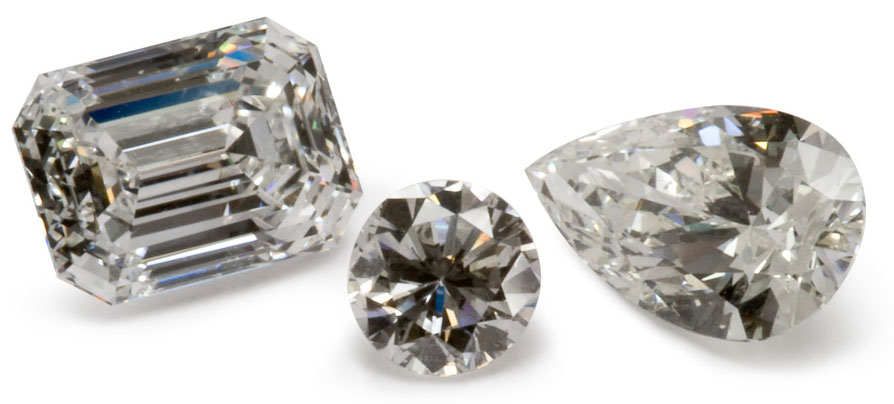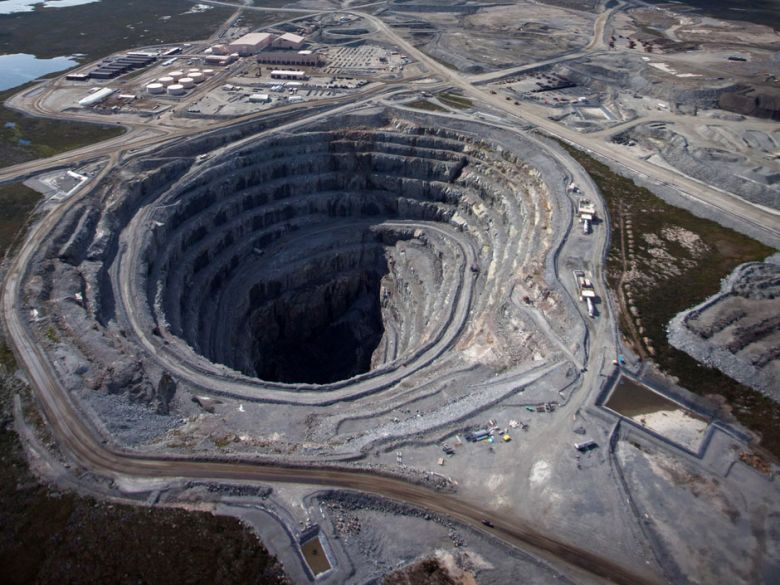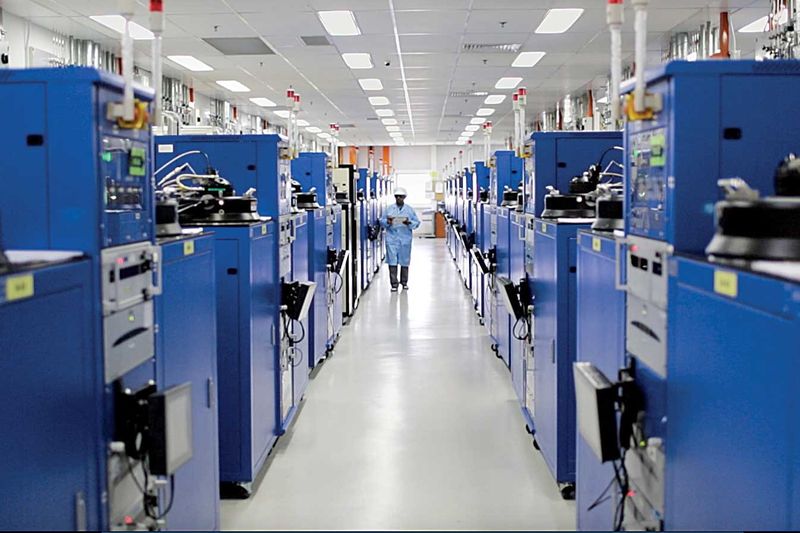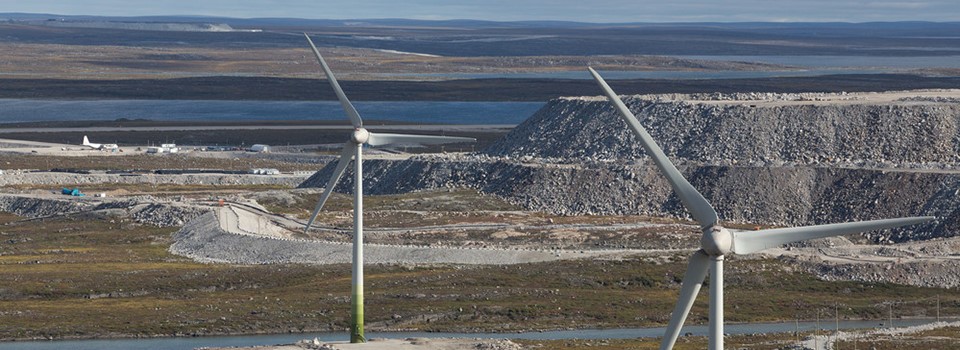What is an "eco-friendly" diamond?

A recent report indicated that 66% of consumers prefer to purchase products from socially responsible companies. Of course, all companies want that feather in their cap, but what does "socially conscious" or "eco-friendly" mean when it comes to gems?
It depends on whom you ask and where you look.
Here's a brief look at some of the issues involved in comparing the environmental impact of diamond mining versus making diamonds in a lab.
Producers of lab-grown diamonds promote their gems as being conflict free and more environmentally friendly than mined diamonds.
Most consumers can picture a deep hole, a dry landscape stripped of foliage and human habitation to harvest its buried diamonds. Growing diamonds in a lab, on the other hand, conjures up images of pristine facilities, the latest technology, the purest of science.
The story is more complex and more interesting.
Soil, energy, air
Diamond mining can take various forms, including open pit, marine, and alluvial. Each type of mining uses different methods and machinery, and the mark left by mining varies across geographic locations.
Open pit mining, which requires removing large amounts of earth and rock to get to the diamonds, is the most productive type but is also the most damaging to the ecosystem.
Environmental reclamation efforts aim to return the landscape to its original condition. The fill removed from the pit is returned to the pit after the mining operations are over. The topsoil is also preserved, to be re-deposited so that vegetation can be planted. De Beers spends millions of dollars on reclamation projects. In some regions, however, where there is little infrastructure to enforce environmental regulations, pits are left open and runoff contaminates rivers and streams.
Growing gems in a lab has less visible effects on the environment. Growers produce diamond through either of two methods: HPHT (high pressure and high temperature) or CVD (chemical vapor distribution). Producing a diamond can take several days or even weeks of constant energy. The amount of energy used depends on many variables, but in general, the higher the size and purity of the gem, the more energy used.
In terms of energy per carat, diamond mining in some locations is more energy-efficient than making diamonds in a lab. But mines in remote locations must produce electricity. The majority of DeBeers' energy production comes from fossil fuels, which emit gases that contribute to climate change.
The mining industry is making an effort to convert to renewable energy. The Diavik mine in the Northwest Territories of Canada offsets its greenhouse gas emissions by using a wind-diesel hybrid wind farm.
Labs produce far less greenhouse gases that mining companies, though there is not enough evidence available to determine their carbon footprint. Diamond Foundry is the only lab-grown producer certified as carbon neutral.
Regulation & supervision
The mining industry is regulated and companies are expected to publish sustainability reports. Some companies employ third-party agencies to monitor environmental and social impacts.
Producers of lab-grown diamonds are all privately owned. They have very little outside supervision and are not required to disclose information.
Conflict free
Conflict diamonds are those mined in war zones and sold through illegal channels to finance insurgencies. It's a bloody business, where access to the diamonds motivates atrocities beyond the wars' general terror and slaughter.
In 2003 the diamond industry developed the Kimberley Process Certification Scheme to prevent conflict diamond rough from entering the legal diamond market. Today, Kimberly Process facilitators claim 99.8 per cent of the world's diamonds are conflict-free.
Some critics object that "conflict-free diamond" covers only diamonds mined by rebel groups and excludes issues such as child labor, money laundering and terrorism. They say the Kimberly Process does not provide sufficient evidence of traceability and there is no independent monitoring.
Lab-grown diamonds are clearly free of these issues.
Social contribution
Diamond mining offers employment to local people. In locales where De Beers operates, it also aids the communities through various programs, such as education initiatives, community development projects, and support to entrepreneurs. In Canada, for example, De Beers contributed $55 million through Impacts and Benefits Agreements (IBAs), which are formal community investment agreements with indigenous groups. In Botswana, a joint venture with the government added $4 billion to the economy, including health benefits.
Diamond growing companies are not contributing to the economy and society on the same scale.
FOR AGENTS & UNDERWRITERS
Mined and lab-grown diamonds are both "real diamond," having the same chemical, physical and optical properties. But their valuations differ.
Value is determined, ultimately, by the market. New technologies and an increasing number of diamond producers mean more competition, which can put the pricing of both lab-made and mined diamonds in flux.
It's important to have an appraisal from a trained gemologist appraiser who is familiar with the current market for mined and lab-made diamonds.
An appraisal should state that the diamond is either mined (natural) or lab-made (synthetic, lab-grown, man-made, cultured, created).
The best appraisal includes the JISO 78/79 appraisal form and is written by a qualified gemologist (GG, FGA+, or equivalent), preferably one who has additional insurance appraisal training. One course offering such additional training is the Certified Insurance Appraiser™ (CIA) course of the Jewelry Insurance Appraisal Institute.
Since most appraisers cannot afford the technology needed to recognize lab-made diamonds, we recommend having a report from a lab such as GIA, which issues reports for both mined and lab-made gems.
Follow these links to verify diamond reports you receive:
GIA Report Check
AGS Report Verification
GCAL Certificate Search
FOR ADJUSTERS
Jewelry with multiple gems may have mined and lab-grown stones mixed together. If the appraisal does not explicitly state a gem is mined, use every means possible to determine whether it is mined or lab-grown.
Some lab-grown diamonds are inscribed with the name of the manufacturer, though some are not. And inscriptions on the gem's girdle can be removed. Deliberate non-disclosure is always possible.
Gem-grading labs have received parcels with lab-grown diamonds mixed in with mined gems. How many lab-made stones have not been "caught" and are out in the marketplace being sold, and priced, as mined diamonds? The potential for overpayment on claims is enormous.
Sales receipts and proof-of-payment docs are often useful in establishing whether a diamond is mined or lab-made.
©2000-2025, JCRS Inland Marine Solutions, Inc. All Rights Reserved. www.jcrs.com




